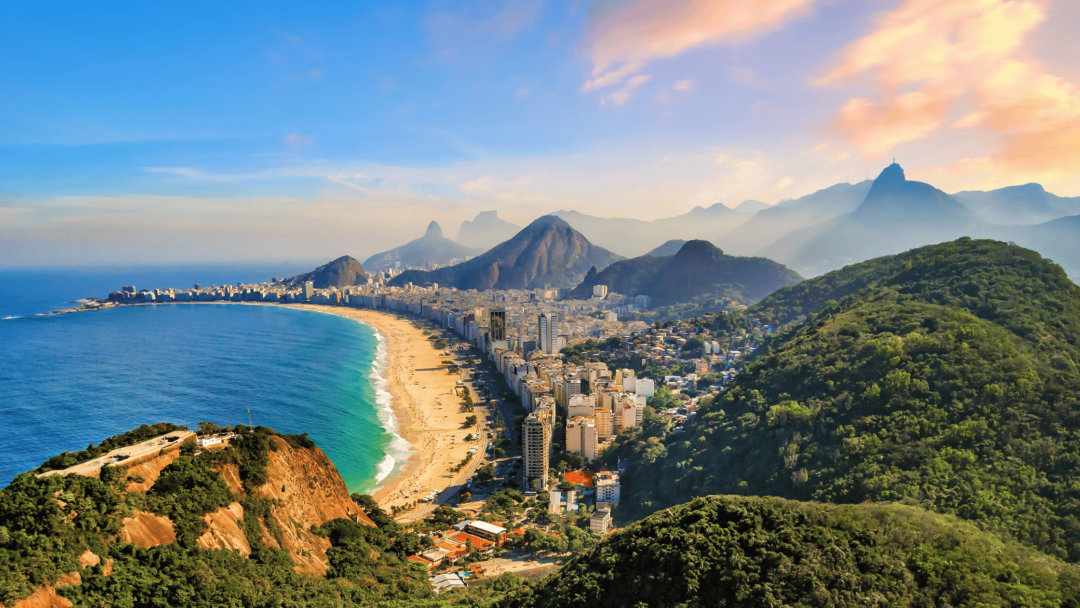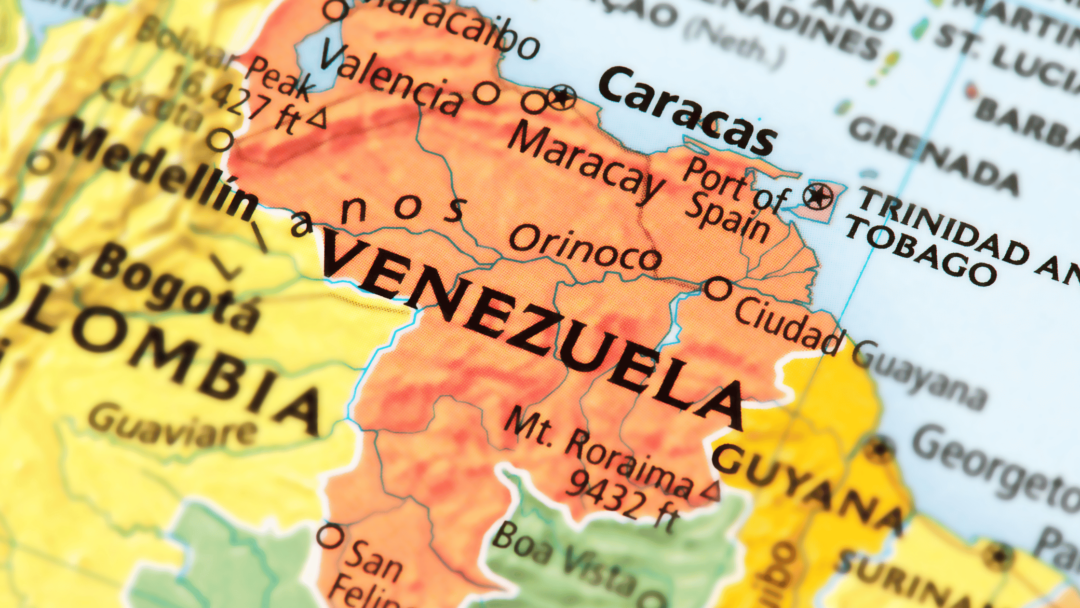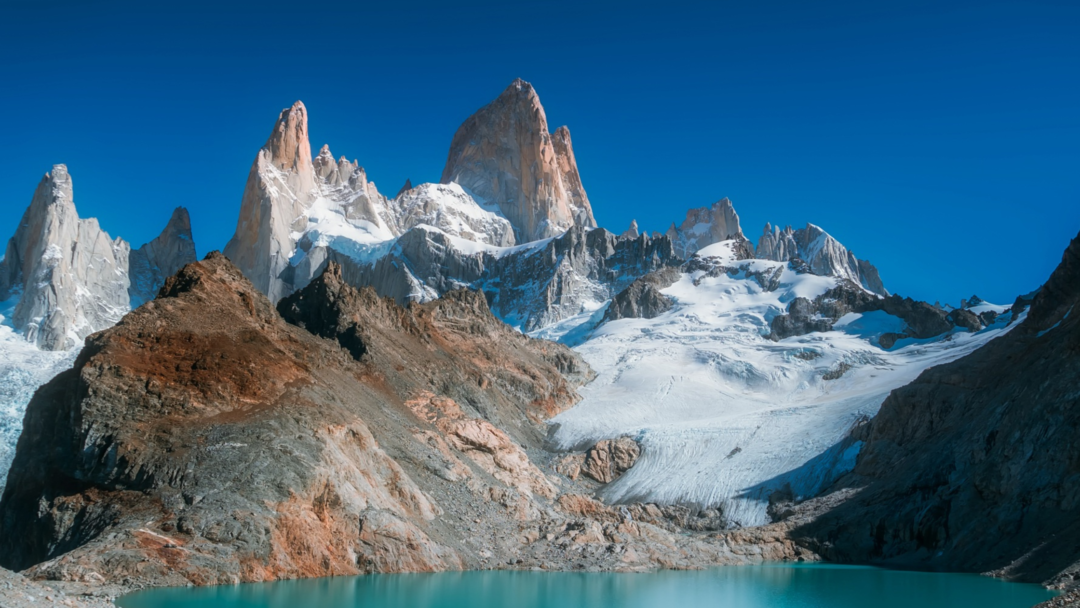When exploring Colombia, you’ll find that its culture and history are deeply intertwined with the hobbies and activities enjoyed by its people.
Traveling and reading are among the most popular hobbies in Colombia. Locals and visitors alike use these hobbies to dive into the country’s rich heritage.
Traveling through the Walled City of Cartagena or experiencing the breathtaking landscapes of Tayrona National Park are excellent ways to immerse yourself in Colombian history and culture.

Colombia’s vibrant culture is also reflected in its traditions and other popular pastimes.
For example, the Carnaval de Barranquilla is a major cultural event that showcases music, dance, and colorful parades.
Additionally, the traditional game of Tejo, often played during social gatherings, highlights the country’s unique sports culture.
These customs not only offer entertainment but also provide a window into the nation’s rich cultural tapestry.
Whether you’re a nature lover or a history buff, Colombia offers a myriad of activities to get you started.
Hiking in Valle de Cocora or exploring Providencia Island can satisfy your adventurous spirit. Meanwhile, visiting museums like Museo del Oro and Museo Botero del Banco de la Republica will delight those interested in historical and cultural insights.
With so many engaging options, you’re sure to find something that piques your interest and deepens your appreciation for Colombian culture.
Discovering the Colombian Landscape

Colombia’s landscape offers a diverse array of natural wonders, including towering mountain ranges, pristine beaches, and dense rainforests. Each region offers unique activities and opportunities, perfect for those seeking either adventure or tranquility.
The Andean Mountains
The Andean Mountains in Colombia are home to some of the most breathtaking views and outdoor activities. These mountains stretch across the country, offering a range of terrains for hiking and biking.
One popular destination is Cocora Valley, known for its towering wax palms.
Here, you can enjoy numerous scenic trails that take you through lush landscapes and past cascading waterfalls.
If you’re a nature enthusiast, visiting Los Nevados National Natural Park should be on your list. This park features snow-capped peaks and crystal-clear lakes that are perfect for photos.
The Andean region is not just for adrenaline junkies; it’s also a place for leisure.
Relaxing in the hot springs of Santa Rosa de Cabal offers a peaceful escape amidst the mountains.
Caribbean Coastline
The Caribbean coastline of Colombia is famous for its stunning beaches and warm waters.
Tayrona National Park is one of the jewels of this region. With its combination of lush tropical rainforest and pristine beaches, it provides an ideal setting for both relaxation and adventure.
Tayrona offers various outdoor activities like snorkeling, swimming, and hiking along its many trails.
Another top destination is Baru Island, where you can enjoy white sand beaches and crystal-clear water.
The area is perfect for those looking to experience the natural beauty and tranquility of the Caribbean. Whether you’re lounging on the beach or exploring the vibrant marine life, the coastline offers something for everyone.
The Amazon and Beyond
The Colombian Amazon is a haven for biodiversity and a paradise for nature lovers. This vast rainforest is home to an incredible range of flora and fauna, making it an essential destination for eco-tourism.
Activities like boat tours along the Amazon River offer sightings of pink dolphins and other unique wildlife.
Venturing further, you’ll find Amacayacu National Park, which offers trails through the dense jungle and opportunities to learn about indigenous cultures.
This region is ideal for those interested in extensive outdoor activities such as bird watching and river kayaking.
Exploring the Amazon allows you to immerse yourself in one of the most diverse ecosystems on Earth, providing a unique blend of adventure and education.
Cultural Fabric of Colombia

Colombia’s cultural fabric weaves together diverse traditions influenced by Spanish, African, and European heritage, creating a rich tapestry that includes music, dance, and artistic expressions. These elements collectively shape the unique identity of the country.
Music and Dance
Music and dance are integral to Colombian culture.
Salsa, particularly in Cali, is a major cultural expression, often referred to as the “World Capital of Salsa.” You will find energetic salsa clubs and schools throughout the city, where locals and visitors dance to the infectious Latin American rhythms.
Colombia’s Carnaval de Barranquilla showcases an explosion of music and dance, featuring vibrant parades and traditional cumbia performances. This celebration reflects the blending of Spanish, African, and indigenous influences.
In the streets of Medellín’s Comuna 13, you can experience the soul-stirring beats of reggaetón and hip-hop, which tell stories of the neighborhood’s transformation and resilience.
Artistic Expressions
Colombia’s artistic landscape is just as lively.
Bogotá’s streets are adorned with expansive murals and graffiti, turning the city into an open-air gallery.
In Medellín’s Comuna 13, street art has become a vehicle for social change, with colorful murals depicting the struggles and hopes of its residents.
Colonial architecture, particularly in the Walled City of Cartagena, showcases historic cathedrals and buildings that tell the story of European influence.
The intricate designs of these edifices captivate visitors, offering a glimpse into the colonial era.
Sculptures, such as those by the renowned artist Fernando Botero, can be found throughout Bogotá and Medellín. His distinct style, characterized by exaggerated volume and form, is a testament to Colombia’s vibrant artistic heritage.
Historical Journeys

Exploring the historical journeys in Colombia offers a captivating insight into its rich past, marked by ancient civilizations and colonial influences. You will encounter well-preserved ruins, colonial architecture, and monuments that reveal Colombia’s cultural heritage.
Historic Sites and Ruins
Colombia is home to many historic sites and ruins that narrate the tales of its ancient civilizations.
One of the most notable is Ciudad Perdida or the “Lost City,” which predates Machu Picchu and offers an intense trekking experience through the Sierra Nevada mountains.
Another significant site is the San Agustin Archaeological Park, a UNESCO World Heritage Site, known for its impressive collection of stone statues and tombs that provide insights into pre-Columbian cultures.
Villa de Leyva, a colonial town, is famous for its well-preserved architecture and cobblestone streets.
The town’s main square is one of the largest in South America, surrounded by historical buildings that date back to the 16th century.
Preservation of Heritage
Colombia takes pride in preserving its rich heritage through meticulous conservation efforts.
La Candelaria, the historic heart of Bogotá, is a prime example. This area showcases colonial architecture with buildings that have been restored to reflect their historic splendor.
Efforts in places like Guatape focus on maintaining the colorful facades and traditional designs that attract numerous visitors.
Monuments, such as the numerous historic cathedrals and government buildings, are frequently maintained to ensure they retain their cultural significance.
These efforts not only protect the physical structures but also the stories and cultural values they represent, enabling future generations to appreciate and learn from Colombia’s historical journeys.
Adventure and Outdoor Activities

Colombia offers numerous outdoor adventures set against stunning natural backdrops like mountains, rivers, and lush forests. From hiking through scenic valleys to diving in crystal-clear waters, the country caters to thrill-seekers and nature lovers alike.
Hiking and Biking
For hiking enthusiasts, Colombia features some of the most beautiful trails, such as the ones in Salento and the Cocora Valley. Here, you can trek amongst towering wax palms, the national tree of Colombia.
Other notable hiking destinations include Tayrona National Park, where you can explore both jungle trails and pristine coastal paths.
Biking is equally popular. The routes in Colombia range from easy rides to challenging mountain trails.
In destinations around San Andres, cycling offers a unique way to explore the island’s beaches and rugged terrain. You’ll find both guided tours and solo opportunities catered to different skill levels.
Water Sports and Activities
Colombia’s diverse geography makes it a hotspot for water sports.
In places like San Andres, you can indulge in scuba diving to explore coral reefs and marine life.
Tayrona National Park is another excellent spot for water activities such as snorkeling and kayaking.
Rafting the turbulent rivers near San Gil is a must-try experience for adventure seekers.
The area also provides opportunities for paragliding and canyoning, making it a versatile spot for various outdoor activities.
Whether you’re a seasoned diver or a beginner, Colombia offers numerous locations and experiences tailored to water sports enthusiasts.
Lifestyle and Leisure in Colombia

Colombia offers a vibrant lifestyle marked by its rich culinary traditions and an active engagement in sports and recreation. Whether you’re a lover of food or an avid sports enthusiast, Colombia has something engaging and rewarding to offer.
Colombia’s Culinary Delights
Colombian cuisine is a flavorful journey that reflects the country’s diverse culture and history.
One must-try experience is a food tour. In regions like Bogotá and Medellín, you can sample arepas, empanadas, and bandeja paisa.
You can’t miss visiting the Coffee Region, known for its exceptional coffee production. Tours here often include tastings and in-depth looks at coffee farming processes.
For a unique dining experience, try the tasting menu at Leo in Bogotá or visit the iconic Andrés Carne de Res, known for its lively atmosphere and delicious dishes.
Traveling to different regions to explore local cuisine can also be a delightful way to appreciate Colombia’s rich culinary landscape.
Sports and Recreation
Sports are a significant part of Colombian culture.
Soccer is immensely popular, with matches drawing large public crowds and creating a vibrant atmosphere.
Cycling is also a prevalent activity. Bogotá’s ciclovía, where roads are closed to motor vehicles on Sunday mornings, allows you to enjoy cycling and walking without traffic.
Colombians also have a passion for rugby and other athletic pursuits.
The country’s varied geography offers numerous opportunities for outdoor sports and adventures, from hiking in national parks to water sports on the coast.
Engaging in these activities not only promotes physical well-being, but also allows you to connect with the local culture and natural beauty.
Social and Public Life

Colombia’s social and public life is vibrant, heavily influenced by its rich traditions and urban development.
Key highlights include renowned festivals such as the Barranquilla Carnival and various public events, as well as the extensive transport networks connecting cities like Bogota and Medellin.
Festivals and Public Events
Festivals are a major aspect of Colombian culture, drawing locals and tourists alike.
The Barranquilla Carnival, one of the largest and most colorful festivals, showcases elaborate parades, costumes, and music.
The Medellin Flower Festival, known for its stunning flower displays and cultural events, is another must-visit.
Public events also celebrate art and innovation.
Medellin’s cultural centers host various exhibitions, while Bogota offers numerous film and music festivals throughout the year.
You can experience Colombia’s vibrant public life through these diverse festivities that highlight the country’s traditions and creativity.
Transport and Connectivity
Colombia has a well-developed transportation network that enhances connectivity across major cities.
In urban areas like Bogota and Medellin, buses are a popular mode of public transport.
The TransMilenio system in Bogota and Metro in Medellin provide efficient ways to navigate these bustling cities.
For longer distances, domestic flights connect cities like Cartagena, Cali, and Pereira quickly and conveniently.
Taxis and ride-sharing services such as Uber are widely available in urban areas.
The country’s focus on improving transport infrastructure aims to boost tourism and urban development.
Innovative projects, such as cable cars in Medellin, further enhance accessibility and mobility, making it easier for you to explore Colombia’s diverse regions and rich cultural heritage.
Embracing the Arts and Education

Exploring Colombia through its art galleries and museums provides a captivating window into the nation’s vibrant culture. Education plays a crucial role in preserving this cultural heritage, ensuring it thrives for future generations.
Art Galleries and Museums
Colombia’s art scene offers diverse experiences, with numerous galleries and museums showcasing both traditional and contemporary works.
In Bogotá, the Museo del Oro is renowned for its extensive collection of pre-Columbian gold artifacts. The Museo Botero also stands out, featuring works by famous artist Fernando Botero.
In Medellín, the Museum of Modern Art highlights contemporary Colombian artists, reflecting the nation’s dynamic, evolving art landscape.
Street art is another crucial part of Colombia’s cultural fabric, especially in Bogotá’s Candelaria district, where murals and graffiti reflect social and political themes.
Visiting these sites offers both inspiration and a deeper appreciation of Colombia’s rich artistic heritage, making them essential stops for anyone interested in the country’s culture.
The Role of Education in Cultural Preservation
Education is a pillar in preserving and nurturing Colombia’s cultural heritage.
Schools and universities prioritize teaching about the nation’s history, traditions, and artistic achievements.
Programs often include field trips to historical sites and museums, fostering a hands-on learning experience.
Institutes such as the Universidad de los Andes in Bogotá offer specialized courses in cultural management and preservation, encouraging innovation in these fields.
Additionally, educational initiatives also focus on the importance of maintaining indigenous languages and customs.
Through a combination of formal education and community-based projects, these efforts ensure that Colombia’s cultural legacy remains vibrant and relevant for future generations.
Planning Your Colombian Hobby Adventure

When planning your Colombian hobby adventure, start by considering the weather. Colombia’s climate varies greatly.
The coastal areas like Cartagena are typically warm and humid, whereas the Andes region, including cities like Bogotá, is cooler.
Traveling within Colombia is relatively easy with well-connected flights and buses. Main cities such as Medellín and Bogotá offer numerous activities.
| Region | Average Temperature | Key Cities |
|---|---|---|
| Caribbean | 75-88°F (24-31°C) | Cartagena, Santa Marta |
| Andes | 50-66°F (10-19°C) | Bogotá, Medellín |
| Amazon Region | 73-86°F (23-30°C) | Leticia |
Prepare an itinerary tailored to your interests.
History buffs should explore the archaeological mysteries of San Agustín. For food lovers, Popayán is a must-visit for its unique culinary offerings.
Things to Do in Colombia:
- Explore ancient ruins: Discover the lost civilizations of San Agustín.
- Outdoor adventures: Try paragliding over Medellín or trekking in Tayrona National Park.
- Cultural experiences: Visit the museums in Bogotá.
Ensure you pack appropriately for both the activities and the varying climates.
Specific gear may be needed for adventures like hiking or diving.
Colombian tourism is thriving, making it a great time to visit.
English is widely spoken in tourist areas, but learning a few Spanish phrases can enhance your experience.
Frequently Asked Questions

Learn about the popular hobbies in Colombia, influenced by the country’s cultural traditions and historical aspects, reflecting local pastimes and interests.
What are the typical hobbies enjoyed by Colombians?
Colombians enjoy activities such as dancing, particularly salsa and cumbia, which are integral to social gatherings.
Additionally, soccer is a national passion, with many participating and enjoying the sport.
Outdoor activities like hiking and cycling are also popular due to Colombia’s diverse landscapes.
How do Colombian cultural traditions influence local pastimes?
Cultural traditions deeply influence local pastimes.
Traditional dances like salsa and cumbia are prevalent in social events.
The traditional sport of Tejo, which involves throwing metal discs at a clay board loaded with gunpowder, is widely appreciated and reflects the cultural value placed on community and celebration.
What are some Colombian cultural facts that tourists should know about?
Tourists should know that Colombians value festivals and social gatherings.
The Carnaval de Barranquilla is one of the most vibrant celebrations, showcasing Colombian music, dance, and costumes.
The country’s diverse climate and geography, such as the Amazon rainforest and Andean mountains, play significant roles in the lifestyle and activities enjoyed by locals.
How do Colombian celebrations and festivals reflect their hobbies and interests?
Celebrations like the Carnaval de Barranquilla highlight the importance of music, dance, and community in Colombian culture.
Parades, music performances, and dancing are central to these festivities.
Traditional sports like Tejo are also featured in various festivals, demonstrating the cultural importance of these pastimes.
What culinary activities are considered hobbies in Colombian culture?
Cooking and enjoying traditional foods are significant hobbies.
Colombians take pride in dishes like arepas, bandeja paisa, and sancocho.
Street food tours, particularly in cities like Medellín and Cartagena, are popular activities for locals and tourists alike, offering a taste of Colombian culinary tradition.
Which historical aspects of Colombia are most celebrated and how do they relate to leisure activities?
Colombia’s history is celebrated through its many festivals and historical sites.
The Walled City of Cartagena stands as a testament to colonial history.
Activities like visiting the Museo del Oro in Bogotá connect people to Colombia’s pre-Colombian heritage, while historical sites such as San Agustin Archaeological Park offer insights into ancient civilizations.





